Bronx Beauty: Nature and Urban Life Intermingle in New York City Borough, by Daniel R. Schwarz
“Bronx Beauty: Nature and Urban Life Intermingle in New York City Borough,” Ithaca Journal, Elmira Star-Gazette, and Binghamton Press & Sun-Bulletin, Nov. 21 2016, 1D-5D-6D,
http://www.pressconnects.com/story/life/2015/11/20/nature-urban-life-intermingle-bronx/76115472/ and http://www.ithacajournal.com/story/life/2015/11/20/nature-urban-life-intermingle-bronx/76115472/
Introduction
|
What makes the Bronx special is its opportunities for country pleasures within a few blocks of urban and suburban life. Despite being the third most populated county in the US, and one the five poorest, about a quarter of its land is open space; its beautiful green areas are a major reason to visit. Will the Brooklyn Renaissance, about which I wrote in an earlier article for these pages, be the model for a Bronx Renaissance , and is it fair to say that such a Renaissance is under way? By the standards of Brooklyn and Manhattan, the Bronx, in most areas, still offers an affordable cost of living and vibrant neighborhoods.
The Bronx was named after Jonas Bronck who created the first settlement in 1639 as part of the New Netherland colony. Populated by over 1.4 million residents, the Bronx is the northernmost borough of New York City and the only borough on the mainland. The West Bronx was annexed by New York City in 1875, and the East Bronx was annexed in 1895, but the Bronx first became a separate county in 1914.
In 2012, according to a US census estimate, more than 54 percent of the residents are Hispanic and over 43 percent are Black. Non-Hispanic whites are 10.5 percent, with Italians the largest group followed by Albanians and Germans; there are also Russian and Polish components. The Asian population is only a little over 4 percent.
The Bronx has undergone a demographic shift. In the 1930s and 1940s The Bronx was known as the Jewish Borough and was 49 percent Jewish. But only a fraction of the Jews remain. In 2013, the Jewish population had shrunken to 54,000 which means about 3 percent. Riverdale is home to over 20,000 Jews. The other 34,000 live in scattered pockets; most of that group doesn’t belong to synagogues, some are intermarried, and many are quite poor.
The Bronx’s main street, Jerome Ave., is 5.6 miles and is a continuation of Manhattan’s Fifth Ave; like Fifth Ave, it divides the east and west addresses. Equally important is the Grand Concourse, modeled on the Champs-Elysses in Paris and considered the Park Ave. of the Bronx; but at 3.6 miles it is much longer than the Paris antecedent. From 153 St. to 167 St. on the Grand Concourse is an historic area with fine art deco architecture. However much of the area adjoining the Concourse has lost its luster.
Near the Grand Concourse is the original Yankee Stadium; the site is now a park called “Heritage Field” that was built in 1923 and renovated in 1976. The new 2009 Yankee Stadium was built at a cost of $2.3 billion; the replacement replicated some features of the original stadium which is one block away. The Yankees’ nickname is the Bronx Bombers.
Major Attractions
|
When one thinks of the Bronx, the first three sites that come to mind are the Bronx Zoo, the New York Botanical Gardens, and the aforementioned. Yankee Stadium. The Zoo and Gardens are within the more than 700 acre Bronx Park which includes two miles of the Bronx River and offers many opportunities for recreational activities, including birding, biking, and athletic fields. The Zoo and the Gardens are each worth a full day, but many tourists try to combine them in one visit. Both are easily accessible by car or public transportation.
Dating from 1899, the Bronx Zoo is one of the largest metropolitan zoos in the world, with 4000 animals representing 650 species on 236 acres that provide natural habitats for the animals. Tickets for the zoo are less expensive between November 2 , 2015 and March 24, 2016 and also less expensive if purchased on line. Wednesdays you may pay what you wish. For details on purchasing tickets: http://mail.bronxzoo.com/plan-your-trip/hours-and-rates.aspx
Founded in 1891, the 250 acre New York Botanical Garden has more than a million plants in its collection and has over 50 separate gardens. With almost 200 employees, it operates one of the world’s largest plant research and conservation programs. Highlights include a library, the Peggy Rockefeller Rose Garden, an old-growth forest dating back to before European settlement. The New York Botanical Garden is open year round from 11 a.m. to 6 p.m. but closed most Mondays. For information on daily activities, special exhibits, and tickets: http://www.nybg.org/visit
The largest park in New York City and a great treasure of the Bronx is Pelham Bay Park. Created in 1888, the Park is three times as big as Central Park and has a thirteen mile shoreline along Long Island Sound. It has wonderful hiking trails, bridle trails, and biking paths, as well as golf courses and tennis courts. The park contains the 1.1 mile Orchard Beach, the Bronx’s only public beach; in the 1930s Orchard Beach was called “The Riviera of New York.” Within the Park is the Bartow-Pell Mansion Museum dating from 1836-1842 and offering a variety of talks and programs.
Bronx Neighborhoods:
Like the other boroughs the Bronx is defined by its ever-changing neighborhoods. The Northern Bronx was where in the 19th century Manhattanites went to the country and where some wealthy people built country houses.
Riverdale, in the northwest Bronx, is an affluent neighborhood with a low crime rate. In the 19th century, it was a place where wealthy Manhattan residents built estates, notably in the Fieldston area, which is still a well-to-do enclave with lots of trees and large homes, Fieldston contains two rather elite private schools: Horace Mann and Fieldston; a third, Riverdale Country school lies just outside Fieldston. Close by these schools is the prestigious Bronx High School of Science, admission to which requires strong academic credentials. Manhattan College is also located in the Riverdale section to which it moved in 1922.
Because of its continuing strong Jewish presence, Riverdale still has Jewish day schools. Riverdale also offers the excellent Derfner Judaica Museum located in the Jacob Reingold Pavilion on the grounds of the Hebrew Home, a senior living facility which also houses a fine art collection and an outdoor sculpture garden.
|
Among Riverdales’s attraction is Wave Hill, a 28 acre estate in the Hudson Hill section of Riverdale with beautiful gardens on a slope overlooking the Hudson with views of of the steep cliffs across the Bridge along the Hudson in New Jersey known as the Palisades. Wave Hill House is a mansion dating from 1843. A highlight of Wave Hill is Glyndor House, site of Sunday concerts (tickets for purchase) and the (free) Glyndor Gallery art exhibits.
The Pelham Bay neighborhood is a mixture of Italian and Hispanic residents. Along with Riverdale it is considered one of the safest and child- friendly sections of the Bronx. Pelham Bay includes the residential enclave known as Country Club (named for the Country Club of Westchester to which parts of it belonged), a small waterfront community with a strong Italian component.
South of Riverdale is the scenic hilly area known as Spuyten Duyvil, named after Spuyten Duyvil Creek. "Spuyten Duyvil" literally means "Spouting Devil" or Spuitende Duivel in Dutch; this is a reference to the strong and wild tidal currents found at that location. Many residents have views of the George Washington Bridge and the Palisades.
|
Covering over 400 acres and located at the very north end of the Bronx is Woodlawn Cemetery, where, among many luminaries, Herman Melville, Irving Berlin, Duke Ellington, and Miles Davis are buried. It also contains the Annie Bliss Titanic Memorial dedicated to those who died in that disaster. Woodlawn, at the very north end of the Bronx, is a neighborhood of about 8500 people. This neighborhood has a strong Irish inflexion—with Irish pubs and restaurants such as Rambling House and Mary’s Celtic Kitchen--and attracts Irish immigrants, although originally it was mostly German and now has a small Italian-American component.
City Island, located at the extreme west end of the Long Island Sound, is part of the Pelham Islands, named for their 17th century owner, Tom Pell. Connected to the mainland by the City Island Bridge and once a recreation destination for the wealthy, it is famous for its sea food restaurants. Perhaps the best known of these is the Original Crab Shanty Restaurant.
|
Arthur Ave.--named after US President Chester Arthur (1881-1885)--and East 187 St. is the center of Little Italy which is in the Belmont section. The area not only contains three well-known Italian restaurants that are regarded among the best in the Bronx--Roberto Enzo’s of Arthur Avenue and Emilia’s--but also The Bronx Beer Hall which is within the covered Arthur Ave. Retail Market. While Albanians and Latinos now share the area, the food scene is still dominated by Italian meat, cheese, and bakery shops. Morris Park in the east Bronx is another Italian-American neighborhood. Both areas have strong ties to their Italian heritage, represented by Columbus Day celebrations and interest in Italy’s national soccer team.
There are strong Italian components (as well as a strong Hispanic presence) in Schuylerville, nicknamed Skyvile, in the East Bronx and close to the Pelham Bay and Country Club neighborhoods.
|
The Fordham neighborhood is in the West Bronx is now mostly populated by people of Latin-American and African-American heritage, although there are strong Italian and Albanian components. Old Fordham Village dates back to the colonial period. Located on the Grand Concourse and Kingsbridge Road in Poe Park, in the Fordham section of the Bronx. Is
The Edgar Allan Poe Cottage. Dating from 1812 and moved in 1913, it is where the Poe family lived in the later 1840s.
Located on 85 acres on Rose Hill within the Fordham section and adjacent to Little Italy, Fordham University, with its gothic buildings and lots of green spaces is considered one of the most beautiful US college campuses. You should not miss the Fordham University Church, dating from 1845; pay special attention to its stained glass windows.
The South Bronx is part of the 15th congressional district—one of the poorest districts in the US. About half the population lives under the poverty line. Once the South Bronx had a strong middle class population and was 57.7 percent. Jewish. Flight to the suburbs and other areas—flight that was mostly but by no means entirely of European heritage--resulted in part from social turmoil caused by poverty and its effects. The story of the decline of the South Bronx includes the intersection of crime, high unemployment, street gangs, poor schools, a drug epidemic, falling property values, landlord abandonment, and arson. The deterioration and social chaos in the South Bronx peaked in the 1970s, a time when 40 percent of the South Bronx buildings were burned or abandoned.
While a great deal remains to be done, South Bronx has experienced development and progress in recent decades, notably on Charlotte St. in Crotona Park East, where subsidized ranch houses have increased tenfold and more in value, and also in the Port Morris area in the Southwest Bronx, where the median income of the Latin American—mostly Puerto Rican—and African American populations is higher than that of other South Bronx neighborhoods.
The Hub within the primarily Latino and African-American Melrose neighborhood is the major shopping area of the South Bronx. 1520 Sedgewick Ave. has been recognized as the birthplace of hip-hop; you can take a hip-hop tour with a company called Hush and your guide, Hush claims, will be a hip-hop DJ. For information: http://www.nycgo.com/articles/take-a-tour-hush-hip-hop-tours
Hunts Point, a peninsula in the South Bronx, contains one of the major wholesale food distribution areas in the world, including the Hunts Point Cooperative Market (meat, poultry, etc.), NYC Produce Terminal Market and the New Fulton Fish Market. Much of the residential population are low-income Hispanics. If you visit this daily spectacle, be aware that drugs and prostitution are serious problems in the Hunts Point area.
Other Important Attractions:
The third largest park in New York City, Van Cortlandt Park, is in the Northwest Bronx (the second is Greenbelt in Statin Island). The Park is home to the country’s first public golf course, the oldest house in the Bronx, built in 1748 and now the Van Cortlandt House Museum, and the largest freshwater lake in the Bronx.
Lehman College (once the Bronx campus of Hunter College and built in collegiate gothic style) is the home of one the senior colleges of the CUNY system. Containing within its environs the High School of American Studies, it is located in the North Bronx near the Jerome Park Reservoir (and also near the previously mentioned Bronx High School of Science). The Lehman Center for the Performing Arts is a major cultural venue that offers the borough’s best concert halls and an exciting performing arts center as well as a fine art gallery.
The Bronx Museum of the Arts on the Grand Concourse and 165 St. has a small permanent collection but has hosted important exhibitions.
Starting at East 151s St. along the Grand Concourse, the Bronx Walk of Fame honors luminaries of the Bronx with a plaque. Each year during “Bronx Week,” a 10 day annual celebration in May, new inductees are honored. Included are Colin Powell, Stanley Kubrick, and Red Buttons.
The Hall of Fame for Great Americans is an outdoor sculpture gallery located in the mostly Hispanic University Heights area of the West Bronx on the campus of Bronx Community College. With a 630 foot.
Colonnade, it is a Beaux-Arts structure designed by Stanford White. Within its colonnade are bronze busts of famous Americans, but the Hall of Fame has yet to fulfill its potential as major American historical site.
With a 3.3 acre lake, 11 playgrounds, and the largest swimming pool in the Bronx, Crotona Park is the largest park in the South Bronx. While this can be another possible site for a day outing, be advised that the Park has a high crime rate and for that reason might be avoided.
Author of numerous travel articles and the well-received 2012 book Endtimes? Crises and Turmoil at the New York Times (Excelsior Editions of SUNY Press, recently released in a new paperback edition).), Daniel R. Schwarz is Frederic J. Whiton Professor of English and Stephen H. Weiss Presidential Fellow at Cornell University. He can be reached at drs6@cornell.edu and followed on twitter at www.twitter.com/danRSchwarz and https://www.facebook.com/SchwarzEndtimes.
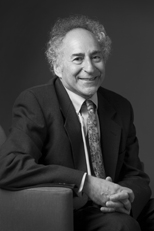
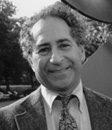
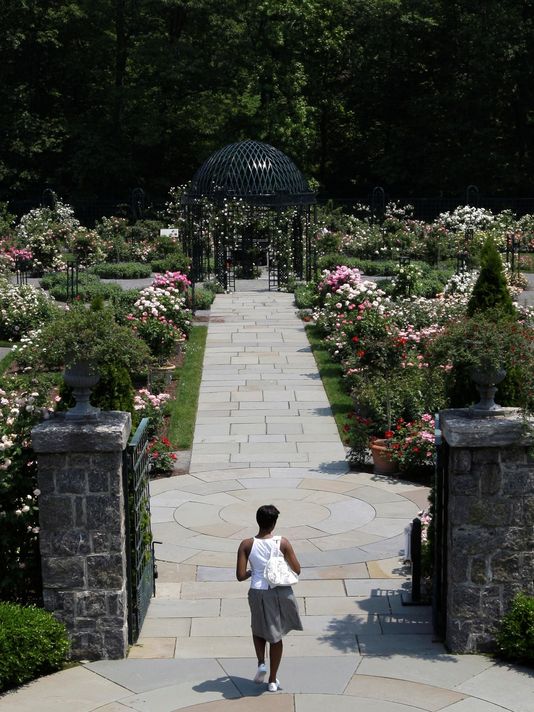 Photo by Marcia Jacobson
Photo by Marcia Jacobson A male polar bear breaks the ice on top of the pond in the "Bear Den" during a snowstorm at the Bronx Zoo. (Photo: AP)
A male polar bear breaks the ice on top of the pond in the "Bear Den" during a snowstorm at the Bronx Zoo. (Photo: AP) Wave Hill House, dating from 1843, overlooking the Hudson River at Wave Hill public gardens and cultural center in the northwest section of the Bronx, was once home to Theodore Roosevelt, Mark Twain and Arturo Toscanini. (Photo: AP)
Wave Hill House, dating from 1843, overlooking the Hudson River at Wave Hill public gardens and cultural center in the northwest section of the Bronx, was once home to Theodore Roosevelt, Mark Twain and Arturo Toscanini. (Photo: AP)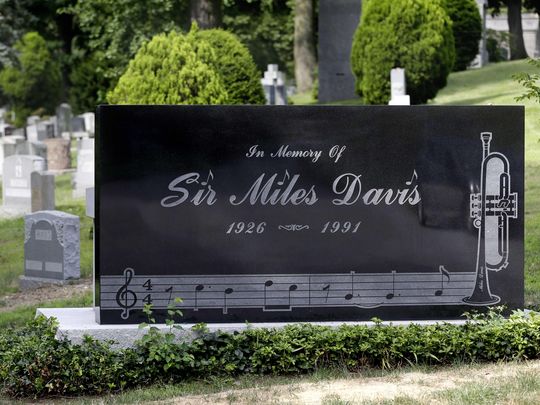 The headstone of jazz great Miles Davis rests at Woodlawn Cemetery in the Bronx. In order to meet demands of Davis' fans who wish to be buried near him, the cemetery opened up additional burial plots behind his grave in 2014. (Photo: AP)
The headstone of jazz great Miles Davis rests at Woodlawn Cemetery in the Bronx. In order to meet demands of Davis' fans who wish to be buried near him, the cemetery opened up additional burial plots behind his grave in 2014. (Photo: AP) David Greco, son of the owner of Mike's Deli, talks with customers inside the delicatessen, located in the Arthur Avenue Retail Market in the Bronx. The counter behind Greco displays Italian specialty meats and sausages. (Photo: AP)
David Greco, son of the owner of Mike's Deli, talks with customers inside the delicatessen, located in the Arthur Avenue Retail Market in the Bronx. The counter behind Greco displays Italian specialty meats and sausages. (Photo: AP)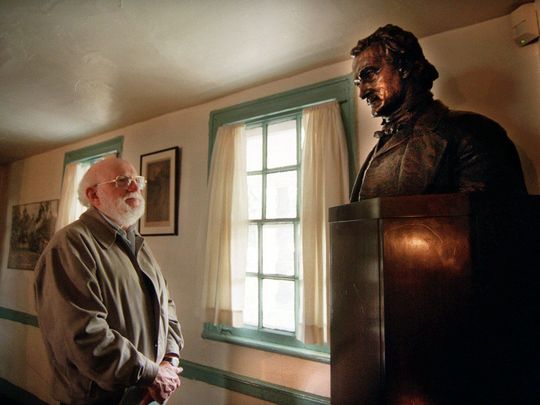 Poet and writer Edgar Allan Poe’s cottage in the Bronx has become a tourist attraction. (Photo: Associated Press)
Poet and writer Edgar Allan Poe’s cottage in the Bronx has become a tourist attraction. (Photo: Associated Press)